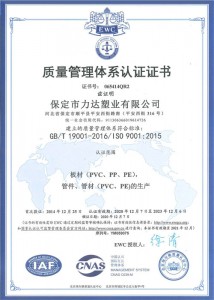Nov . 22, 2024 08:41 Back to list
pp plate
Exploring the PP Plate Versatile Solutions for Modern Manufacturing
In the landscape of modern manufacturing and material science, Polypropylene (PP) plates have emerged as a crucial component across various industries. These plates, derived from one of the most widely used thermoplastics, boast a unique combination of properties that make them indispensable in applications ranging from packaging to automotive components, and even in the medical sector. Understanding the characteristics and applications of PP plates can shed light on their increasing prevalence in today's manufacturing processes.
Material Properties of PP Plates
Polypropylene is known for its impressive chemical resistance, lightweight nature, and durability. One of the standout features of PP plates is their resistance to a wide array of chemicals, including acids, bases, and alcohols, making them suitable for use in environments that are prone to chemical exposure. This property, combined with their inherent strength and flexibility, allows PP plates to withstand mechanical stress and deformation under various conditions.
Furthermore, PP plates exhibit excellent fatigue resistance, which means they can endure repeated stress without succumbing to wear. This characteristic is particularly valuable in applications where components are subject to repetitive motion or load, such as in machinery and conveyor systems. The ability to withstand temperature fluctuations also adds to the versatility of PP plates, allowing them to operate effectively in both high and low-temperature environments.
Applications in Diverse Industries
The applications of PP plates are incredibly diverse, and they cater to numerous industries. In the packaging sector, for instance, PP plates are utilized for creating containers, trays, and protective packaging. Their lightweight nature reduces shipping costs, while their durability ensures that products are well-protected during transit.
pp plate

In the automotive industry, PP plates are increasingly incorporated into various components, including interior dashboard elements and under-the-hood parts. The lightweight characteristics of polypropylene contribute to improved fuel efficiency in vehicles, making it an attractive option for manufacturers aiming to meet stringent environmental regulations. Additionally, the ease of molding and fabrication allows designers to create intricate shapes and designs that enhance both functionality and aesthetics.
The medical sector is yet another domain where PP plates have found significant application. Due to their biocompatibility and resistance to sterilization processes, polypropylene plates are used in medical devices, surgical trays, and laboratory equipment. This ensures that they meet the strict hygiene and safety standards required in healthcare environments.
Environmental Considerations
As sustainability becomes an increasingly pressing concern, the environmental impact of materials used in manufacturing cannot be overlooked. Polypropylene plates offer a viable solution in this regard. They are recyclable, allowing manufacturers to reduce waste and minimize their carbon footprint. Moreover, the production process of polypropylene is relatively less resource-intensive compared to other plastics, making it a more sustainable choice within the industry.
Conclusion
In summary, PP plates represent a fusion of functionality, versatility, and sustainability in modern manufacturing. Their unique properties enable them to serve various applications across industries—from packaging and automotive to medical devices—making them a valuable asset in contemporary production processes. As technological advancements continue to evolve, it is likely that the demand for PP plates will grow, providing innovative solutions that meet the changing needs of industries while promoting environmental responsibility. As we look toward the future, it is evident that PP plates will remain at the forefront of materials engineering, driving efficiency and effectiveness across a multitude of applications.
-
High-Quality PPR Pipes and Fittings Durable ERA PPR & PVC PPR Solutions
NewsJul.08,2025
-
Black HDPE Cutting Board - Durable, Non-Porous & Food Safe HDPE Plastic Cutting Board
NewsJul.08,2025
-
High-Quality CPVC Panel Durable HDPE & PVC Panels Supplier
NewsJul.08,2025
-
Double PE Welding Rod Supplier - High Strength, Durable & Versatile Welding Solutions
NewsJul.07,2025
-
High-Quality PVC-O Pipe Supplier Durable 75mm PVC Pipe & Connections Leading PVC Pipe Company
NewsJul.07,2025
-
HDPE Drainage Pipe Supplier – Durable & Corrosion-Resistant Solutions
NewsJul.06,2025

